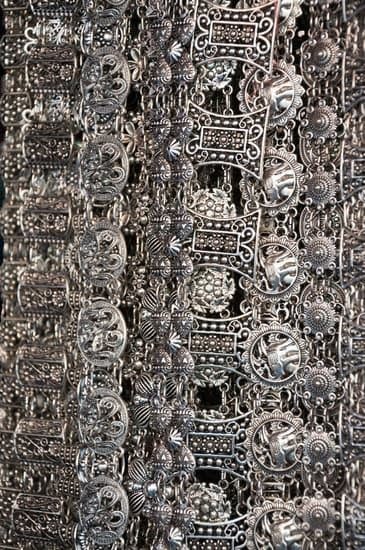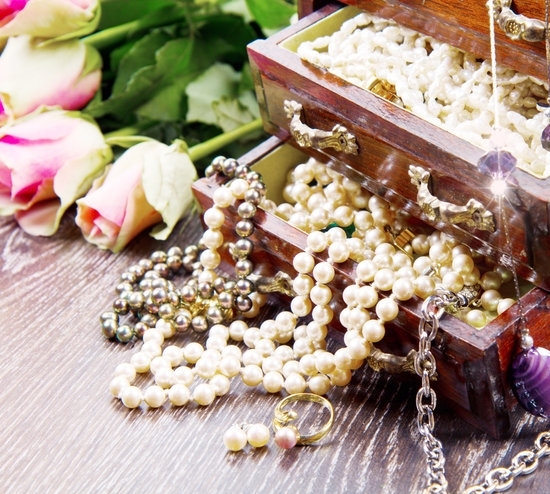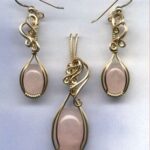Ultrasonic cleaners have become increasingly popular for effectively cleaning jewelry, but the key to achieving the best results lies in using the right liquid. In this article, we will explore the importance of selecting the appropriate liquid for an ultrasonic cleaner and discuss the advantages of utilizing this innovative technology.
Cleaning jewelry can be a delicate task, as certain pieces may be susceptible to damage from abrasive cleaners or excessive rubbing. This is where ultrasonic cleaners come in as a game-changer. By utilizing high-frequency sound waves, these machines create microscopic bubbles that gently remove dirt and grime from every nook and cranny of your jewelry.
However, it’s crucial to choose an appropriate liquid to enhance the cleaning process and ensure the safety of your precious items. The right liquid acts as a carrier for dirt particles, allowing them to detach from your jewelry and be rinsed away. Additionally, it enhances the cavitation process in ultrasonic cleaners, facilitating more efficient cleaning.
By using an ultrasonic cleaner with suitable liquid, you not only save time and effort but also achieve extraordinary results that would be difficult to replicate with traditional methods. Sparkling, brilliantly clean jewelry awaits when you discover which liquid is perfect for your ultrasonic cleaner. Follow along as we dive deeper into understanding how these machines work and explore different liquid options for jewelry cleaning.
Understanding the Basics
An ultrasonic cleaner is a device that utilizes high-frequency sound waves to clean various objects, including jewelry. Understanding the basics of how an ultrasonic cleaner works can help individuals make informed decisions when it comes to cleaning their precious items.
How Does an Ultrasonic Cleaner Work?
Inside an ultrasonic cleaner, there is a tank filled with a liquid solution, referred to as the cleaning bath. When the cleaner is activated, it generates ultrasonic waves that create tiny bubbles in the cleaning bath. These bubbles expand and collapse rapidly in a process called cavitation. As they collapse, they create microscopic shockwaves that dislodge dirt, grime, and other contaminants from whatever is being cleaned.
The cavitation process reaches even the most difficult-to-reach areas of intricate jewelry pieces, ensuring a thorough and effective cleaning. The high-frequency sound waves used by ultrasonic cleaners also have the benefit of being non-abrasive; therefore, they do not damage delicate jewelry or remove any surface material.
Benefits of Using an Ultrasonic Cleaner for Jewelry Cleaning
There are several benefits to using an ultrasonic cleaner for jewelry cleaning:
- Deep Cleaning: The microscopic shockwaves created by cavitation penetrate deep into crevices and tight spots of jewelry pieces that traditional cleaning methods may not reach.
- Time Efficiency: Ultrasonic cleaners provide a quick and efficient way of cleaning jewelry compared to manual methods, saving valuable time.
- Gentle on Jewelry: This technology does not damage or scratch delicate gemstones or metal surfaces when used correctly.
- Versatility: Apart from jewelry pieces, these cleaners can also be used to clean eyewear, watches, dental instruments, coins, and other small items effectively.
Understanding the basics of how an ultrasonic cleaner works helps individuals appreciate its effectiveness in cleaning their precious jewelry pieces thoroughly without causing any harm or damage to them.
Safety First
Using an ultrasonic cleaner can be a highly effective way to clean jewelry, but it is important to prioritize safety during the cleaning process. Ultrasonic cleaners utilize high-frequency sound waves to create microscopic bubbles that gently remove dirt and grime from jewelry. While this technology is efficient, improper use can potentially damage delicate pieces or cause harm to the user. Here are some important tips to ensure safety when using an ultrasonic cleaner for jewelry:
- Remove Fragile Gemstones: Some gemstones may be more susceptible to damage in an ultrasonic cleaner due to their fragile nature or sensitivity to heat and chemicals. Therefore, it is crucial to remove these gemstones before placing your jewelry in the machine. Fragile gemstones include pearls, opals, emeralds, turquoise, and amber.
- Secure Loose Stones: Before cleaning any piece of jewelry in an ultrasonic cleaner, make sure all stones are securely mounted. Loose stones can become dislodged during the cleaning process and cause irreversible damage or even get lost entirely.
- Avoid Reactive Metals: Certain metals can react with the cleaning solution used in ultrasonic cleaners which could lead to discoloration or corrosion of the jewelry piece. Reactive metals include aluminum, magnesium, titanium, and tungsten. It’s better to consult a professional jeweler for advice if you have jewelry made from these metals.
- Use Proper Timing: Prolonged exposure of jewelry in an ultrasonic cleaner can lead to unnecessary wear and tear on delicate pieces or cause stones to become loose over time. Therefore, it is recommended to follow the manufacturer’s instructions regarding appropriate cleaning times for different types of jewelry.
- Protect Sensitive Finishes: Some pieces of jewelry have delicate finishes that may be susceptible to corrosion or fading when exposed to certain liquids or chemicals in the ultrasonic cleaner. To protect these finishes, consider using protective mesh baskets or gentle cleaning solutions specifically designed for sensitive finishes.
By following these safety tips, you can ensure that your jewelry cleaning experience with an ultrasonic cleaner is effective and damage-free. Prioritizing safety will not only protect your beloved pieces but also prolong their longevity, allowing you to enjoy them for years to come.
Choosing the Right Liquid
When it comes to cleaning jewelry in an ultrasonic cleaner, choosing the right liquid is crucial for achieving optimal results. There are several options available, each with their own advantages and disadvantages. In this section, we will explore different liquid options suitable for cleaning jewelry in an ultrasonic cleaner, including water-based solutions, specialized jewelry cleaning solutions, and homemade cleaning solutions.
Water-based solutions are a popular choice for cleaning jewelry in an ultrasonic cleaner due to their accessibility and affordability. Distilled water is often used as a base for these solutions because it is free from minerals that can leave residue on the jewelry.
However, using plain water may not be effective in removing stubborn dirt or oils from the jewelry surface. To enhance the cleaning performance of water-based solutions, you can add mild dish soap or a specialized jewelry cleaning concentrate designed for use with ultrasonic cleaners.
Specialized jewelry cleaning solutions are specifically formulated to provide optimum results when used in an ultrasonic cleaner. These solutions often contain surfactants and detergents that help remove dirt and grime without damaging the jewelry. It is important to choose a reputable brand and follow the instructions provided to ensure compatibility with your ultrasonic cleaner and the type of jewelry you are cleaning.
If you prefer a DIY approach, homemade cleaning solutions can also be used in an ultrasonic cleaner. Ingredients such as vinegar, dish soap, or ammonia can be combined with water to create effective cleaning solutions at home. However, it is important to exercise caution when using homemade solutions as certain chemicals may react unfavorably with certain types of jewelry or gemstones.
| Liquid Option | Advantages | Disadvantages |
|---|---|---|
| Water-based Solutions | Accessible and affordable | May not remove stubborn dirt or oils effectively |
| Specialized Jewelry Cleaning Solutions | Formulated for optimum cleaning results | Potential compatibility issues with certain jewelry types |
| Homemade Cleaning Solutions | Cost-effective and customizable | Potential risk of chemical reactions with certain jewelry or gemstones |
In the next section, we will delve deeper into the advantages and disadvantages of using water-based solutions in an ultrasonic cleaner for jewelry cleaning, providing tips on how to maximize their effectiveness.
Water-based Solutions
Using water as a liquid in an ultrasonic cleaner for jewelry offers several advantages. Firstly, water is readily available and inexpensive compared to specialized cleaning solutions. It is also gentle on most types of jewelry, making it a safe option for delicate pieces. Additionally, water is environmentally friendly and does not leave behind any residues or odors on the cleaned jewelry.
However, there are also some disadvantages to using water in an ultrasonic cleaner. Water alone may not be effective in removing tough stains or debris from certain types of jewelry. It lacks the added cleaning power that specialized solutions offer. Additionally, when using only water, it is important to ensure that the cleaning time is optimized to achieve desired results without damaging the jewelry.
To maximize the effectiveness of water-based solutions in an ultrasonic cleaner, there are a few tips to keep in mind. Firstly, it is recommended to use warm tap water instead of cold water as warmth can enhance the cleaning process.
Secondly, adding a small amount of mild dish soap or a non-ionic detergent can help improve the cleaning efficiency of plain water by breaking down oil and grease residues on the jewelry surface. However, it is important to avoid using strong detergents or abrasive substances as they can damage precious metals or gemstones.
Specialized Jewelry Cleaning Solutions
Using specialized jewelry cleaning solutions in an ultrasonic cleaner can offer numerous benefits and help achieve optimal cleaning results. These commercially available solutions are specifically designed for use in ultrasonic cleaners, ensuring their compatibility with the technology and maximizing their effectiveness. Here’s a closer look at the advantages of using these specialized solutions and some recommendations for reliable brands.
Benefits of Specialized Jewelry Cleaning Solutions:
- Enhanced Cleaning Power: Specialized jewelry cleaning solutions are formulated with ingredients that are effective in removing dirt, grime, oils, and other contaminants from jewelry pieces. They often contain powerful cleaning agents and detergents tailored for use on precious metals, gemstones, and delicate settings.
- Gentle on Jewelry: While powerful enough to remove stubborn stains, these solutions are also designed to be gentle on jewelry materials. They help minimize the risk of causing damage or abrasion to delicate stones or metal finishes.
- Increased Efficiency: Using specialized solutions can improve the efficiency of your cleaning process by accelerating the removal of dirt and stains. The unique formulations are optimized for ultrasonic technology, enabling them to penetrate into hard-to-reach areas like prongs or intricately designed settings.
- Safe for Most Jewelry Types: Many commercially available jewelry cleaning solutions are suitable for a wide range of jewelry types, including gold, silver, platinum, pearls, diamonds, and even costume jewelry. This versatility makes them a convenient option for cleaning various pieces in one go.
Recommended Brands of Specialized Jewelry Cleaning Solutions:
Brand A
This brand offers a range of effective jewelry cleaning solutions specifically formulated for ultrasonic cleaning machines. Their products are known for their high-quality ingredients and ability to deliver exceptional results without causing harm to precious materials.
Brand B
With years of experience in the industry, this brand has established itself as a trusted provider of specialized solutions for jewelry cleaning in ultrasonic cleaners. Their formulas are designed to remove tough stains and restore the luster of jewelry pieces, making them a popular choice among jewelry enthusiasts.
Brand C
Known for their environmentally-friendly approach, this brand offers eco-conscious options for those who prefer greener cleaning solutions. Their specialized jewelry cleaning solutions effectively clean and protect jewelry while minimizing their impact on the environment.
When using specialized jewelry cleaning solutions in an ultrasonic cleaner, it is essential to carefully follow the instructions provided by the manufacturer. This will ensure optimal use and prevent any potential damage to your precious items.
Homemade Cleaning Solutions
Vinegar Cleaning Solution
One popular homemade cleaning solution for an ultrasonic cleaner is a vinegar-based mixture. Vinegar is known for its acidic properties, which can help remove tarnish and grime from jewelry. To create a vinegar cleaning solution, simply mix equal parts of white vinegar and water in a container that is safe to use in the ultrasonic cleaner.
It’s important to note that while vinegar can be effective for cleaning certain types of jewelry, it may not be suitable for all pieces. Vinegar can potentially damage jewelry made of porous gemstones or plated metals. Before using a vinegar cleaning solution on your jewelry, it’s recommended to consult with a professional jeweler or carefully research the compatibility of your specific pieces.
Dish Soap Cleaning Solution
Another common DIY option for an ultrasonic cleaner is using dish soap as the main ingredient for the cleaning solution. Dish soap is a mild detergent that can effectively break down dirt and grime without causing damage to most types of jewelry. To create a dish soap cleaning solution, add a small amount (about a teaspoon) of mild dish soap to warm water in the ultrasonic cleaner’s tank.
When using dish soap as a cleaning solution, it’s crucial to choose one that does not contain harsh chemicals or abrasives. Look for gentle dish soaps that are specifically designed for hand-washing dishes. Avoid using dishwasher detergents or strong antibacterial soaps, as they may contain ingredients that could harm your jewelry.
Ammonia Cleaning Solution
For tougher stains or heavily tarnished jewelry, an ammonia-based cleaning solution can be an effective option when used properly. However, it’s important to exercise caution when working with ammonia because it is a strong chemical that should only be used in well-ventilated areas and while wearing protective gloves.
To create an ammonia cleaning solution, mix one part household ammonia with six parts water in a suitable container for the ultrasonic cleaner. It’s worth mentioning that ammonia is not recommended for use on certain types of gemstones, such as pearls, opals, or turquoise. Before using an ammonia cleaning solution, always consult with a professional jeweler or carefully research the compatibility of your jewelry.
Best Practices
Best Practices: Using the Right Liquid in an Ultrasonic Cleaner for Jewelry
Using the right liquid is essential when it comes to cleaning jewelry in an ultrasonic cleaner. The effectiveness of the cleaning process and the safety of your precious pieces depend on it. In this section, we will provide a comprehensive guide on how to use the selected liquid in an ultrasonic cleaner for jewelry, including step-by-step instructions, recommended cleaning times, and any precautions to take.
Step 1: Selecting the Right Liquid
Before you start cleaning your jewelry, make sure you have chosen a suitable liquid for your ultrasonic cleaner. Consider factors such as the type of jewelry you are cleaning and any specific cleaning requirements it may have. Water-based solutions are a popular choice as they are readily available and safe for most types of jewelry.
However, if you are dealing with heavily tarnished silver or delicate gemstones, using a specialized jewelry cleaning solution may be more appropriate. Homemade cleaning solutions can also be effective but require careful consideration of ingredients that won’t harm your jewelry.
Step 2: Preparing the Ultrasonic Cleaner
Once you have chosen the right liquid, fill the ultrasonic cleaner tank with enough solution to cover all the jewelry you intend to clean. It is crucial not to overfill or underfill the tank as this can affect the efficiency of the cleaning process. Consult your machine’s user manual for guidance on optimal fill level.
Step 3: Preparing Your Jewelry
Before placing your jewelry in the ultrasonic cleaner, inspect each piece carefully to ensure that it does not have loose stones or other fragile components that could be damaged during cleaning. Remove any visible dirt or debris from each item using a soft brush or cloth.
Step 4: Cleaning Process
Place your prepared jewelry into the ultrasonic cleaner’s basket or holder, ensuring that they do not touch one another. Lower it into the tank filled with liquid carefully and close the lid. Start the cleaning process according to the recommended cleaning time specified in your machine’s user manual. Generally, a cleaning cycle can range from 2-10 minutes, but it is best to follow the manufacturer’s instructions for optimal results.
Step 5: Safety Precautions
While the ultrasonic cleaner does most of the work, it’s important to take necessary precautions during and after the cleaning process. Avoid reaching into the tank or touching the liquid when the machine is running as it may cause harm. Once the cleaning cycle is complete, carefully remove your jewelry, and rinse them thoroughly under clean water to remove any residual cleaning solution. Dry each piece gently using a soft cloth before storing or wearing.
By following these best practices, you can ensure that your jewelry receives a thorough and safe cleaning in an ultrasonic cleaner. Remember to always review your machine’s user manual for any specific instructions or guidelines provided by the manufacturer.
Maintenance and Storage
Proper maintenance and storage practices are essential for preserving the longevity and effectiveness of both the ultrasonic cleaner and the liquid used in jewelry cleaning. By following these guidelines, you can ensure that your equipment remains in optimal condition, providing excellent results in future cleaning sessions.
Firstly, maintaining your ultrasonic cleaner is crucial for its continued performance. After each use, it is important to empty out the cleaning solution and thoroughly clean the tank. Any residue or debris left behind can affect the efficiency of the cleaner and potentially damage your jewelry. Use a soft cloth or sponge with mild soap to wipe down the interior of the tank, paying attention to any crevices or hard-to-reach areas.
Additionally, it is recommended to periodically descale your ultrasonic cleaner to remove mineral deposits that may accumulate over time. This can be done by filling the tank with a descaling solution specifically designed for ultrasonic cleaners or a mixture of white vinegar and water. Run the cleaner according to its instructions, emptying out the solution once complete.
Proper storage of your ultrasonic cleaner is equally important. Always store it in a clean, dry location away from direct sunlight and extreme temperatures. Avoid stacking heavy objects on top of it or storing it in an area where it can be easily knocked over or damaged.
In terms of storing the liquid used in your ultrasonic cleaner, it is essential to follow appropriate storage guidelines provided by the manufacturer or outlined on the product label. Some specialized jewelry cleaning solutions may have specific storage requirements due to their chemical composition. Ensure that you store such solutions in their original containers, tightly sealed and kept out of reach of children or pets.
By following these maintenance and storage practices for both your ultrasonic cleaner and its accompanying liquid, you can prolong their lifespan while maximizing their effectiveness during future jewelry cleaning sessions. Investing time into properly caring for your equipment will result in sparkling, brilliantly clean jewelry that you can proudly wear or display.
Conclusion
In conclusion, choosing the right liquid for an ultrasonic cleaner is crucial in achieving sparkling and brilliantly clean jewelry. Throughout this article, we have discussed the importance of using the right liquid and highlighted various options suitable for cleaning jewelry in an ultrasonic cleaner.
Firstly, water-based solutions are a popular choice due to their affordability and accessibility. However, it is important to be cautious when using water as it may not always provide optimal cleaning results, especially for heavily soiled or delicate jewelry. To maximize its effectiveness, ensuring that the water is warm and adding a small amount of mild dish soap can enhance its cleaning power.
Alternatively, commercially available jewelry cleaning solutions specifically designed for ultrasonic cleaners offer convenience and effectiveness. These specialized solutions are formulated to remove dirt, grime, and tarnish without causing any harm to your precious jewelry. It is recommended to choose reliable brands that have been tested and trusted by professionals in the industry.
For those who prefer a more DIY approach, homemade cleaning solutions can also be effective. Ingredients such as vinegar, dish soap, or ammonia can be combined with water to create effective cleaning agents. However, it is essential to consider the type of jewelry being cleaned as some metals and gemstones may react negatively to certain ingredients.

Welcome to my jewelry blog! My name is Sarah and I am the owner of this blog.
I love making jewelry and sharing my creations with others.
So whether you’re someone who loves wearing jewelry yourself or simply enjoys learning about it, be sure to check out my blog for insightful posts on everything related to this exciting topic!





